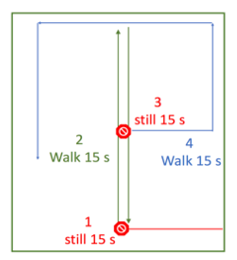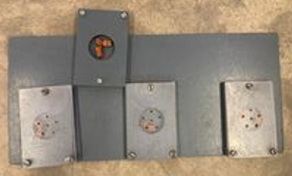Subjects
A total of 54 owners and 61 dogs were recruited through social media. A questionnaire was sent out to owners interested in participating, which included questions about the owners’ age and gender, together with the age, sex, breed, and type of obtainment (control or rehomed) of the dogs’. Based on owners’ responses in the initial questionnaire, the dogs were divided into two groups, control or rehomed. The control group consisted of 31 dogs bought directly from breeders together with 28 owners. The rehomed group consisted of 30 dogs obtained from shelters or privately rehomed, together with 26 owners.
Experimental setup
Behavioural synchronization

A behavioural synchronization test was conducted to observe the locomotory and behavioural synchronization between the dog and the owner. This was done by the owner being guided by verbal instructions and a predetermined walking and standing schedule in an outdoor enclosure (Figure 1), while the dog roamed freely.
The unsolvable problem task

The unsolvable problem task was tested to observe dogs’ contact-seeking behaviour towards humans. The setup consisted of three plates covered in transparent lids with odour holes built on a solid base (Figure 2). Two of the lids were easily moved to give access to treats underneath, while the third in the middle could not be moved.
Hair cortisol and physical activity
After the behavioural synchronization and the unsolvable problem task, dogs were equipped with activity collars to measure physical activity and dog hair was collected to assess long-term stress.
Questionnaires
Three questionnaires were completed by the owners to investigate the dog-owner relationship, and the personalities of the dogs’ and their owners’. The Monash Dog-Owner Relationship Scale was used to investigate the dog-owner relationship, while the Dog Personality Questionnaire and the Big Five Inventory Survey was used to assess the personalities of the dogs’ and the owners’.